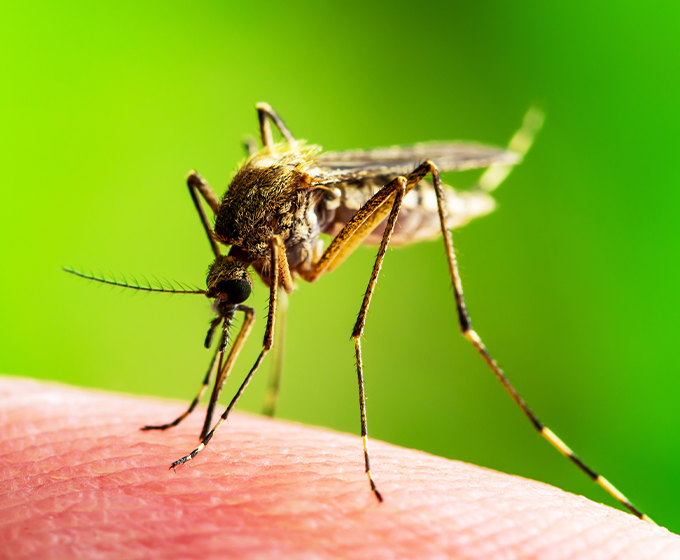SwRI grant to fund work to reduce cost of malaria treatment - UTSA Today

JULY 27, 2020 — UTSA and Southwest Research Institute are working to synthesize novel highly potent derivatives of the antimalarial drug artemisinin with the goal of creating a powerful, cost-effective malaria treatment.
Led by Doug Frantz of the Department of Chemistry in UTSA’s College of Sciences and Shawn Blumberg of SwRI’s Chemistry and Chemical Engineering Division, the work is supported by a $125,000 grant from the Connecting through Research Partnerships (CONNECT) program.
In 2018 Blumberg and Frantz collaborated on a project funded by the Bill & Melinda Gates Foundation to create a more efficient synthesis of artemisinin, a drug derived from the sweet wormwood. While artemisinin is considered the most effective treatment for malaria, the mosquito-borne parasitic infection is becoming harder to battle as it becomes increasingly resistant to drugs like artemisinin.
“Malaria affects 200 million people every year and kills close to 400,000 people, making it one of the world’s most deadly infectious diseases,” Blumberg said. “Unfortunately, the countries that that have the highest incidence of malaria also tend to have lower GDPs and thus are significantly burdened by the cost of current and newer treatments. Our goal is to reduce the cost of artemisinin to treat the populations that are most affected by malaria outbreaks.”
“Our combined expertise in synthetic chemistry and drug discovery will allow us to accelerate our discoveries.”
Most artemisinin is still isolated from the sweet wormwood plant, Artemisia annua, but this process is time-consuming, and crop yields are susceptible to weather patterns, insect pests and other factors. A newer semisynthetic method involves inserting the genes of the plant into a microorganism to produce an intermediate that is then transformed into artemisinin. Despite advancements in both methods, the cost of artemisinin still burdens the countries that are most affected by malaria.
“Dr. Frantz and I were able to create artemisinic acid, which is the direct precursor to artemisinin,” Blumberg said.
Now, the two researchers are following up on their previous work by revisiting the pioneering work of Mitchell Avery at the University of Mississippi in the 1990s.
“Using the chemical technology that we developed, we can pivot the artemisinin synthesis to produce the same highly potent artemisinin derivatives that had previously been studied by Dr. Avery nearly 30 years ago,” Blumberg said. “He was able to make several ultrapotent derivatives from various compounds, but it took multiple complex steps to accomplish that.”
Using the much simpler synthesis technique created by Blumberg and Frantz, they plan to revisit these potent artemisinin derivatives to address the growing resistance in a cost-effective manner.
“Now that it takes fewer steps, we can make more of these derivatives and explore more possibilities for drug treatments,” Blumberg said.
Frantz, who has an extensive background in drug discovery, will focus on translating the new artemisinin derivatives into potential new malaria therapies, which will be created by both Frantz and Blumberg. They plan to start work later this year.
“Our combined expertise in synthetic chemistry and drug discovery will allow us to accelerate our discoveries at the bench into tangible bedside treatments for this devastating disease,” Frantz said.
Blumberg added, “I got into this work because someone once told me if you become a medical doctor, you can treat one person at a time. But if you become a chemist you can treat thousands instantaneously. That is what we’re aiming for.”
SwRI’s Executive Office and UTSA’s Office of the Vice President for Research, Economic Development, and Knowledge Enterprise sponsor the CONNECT program, which offers grant opportunities to enhance greater scientific collaboration between the two institutions.


Comments
Post a Comment